Real estate’s budding prospects for growth
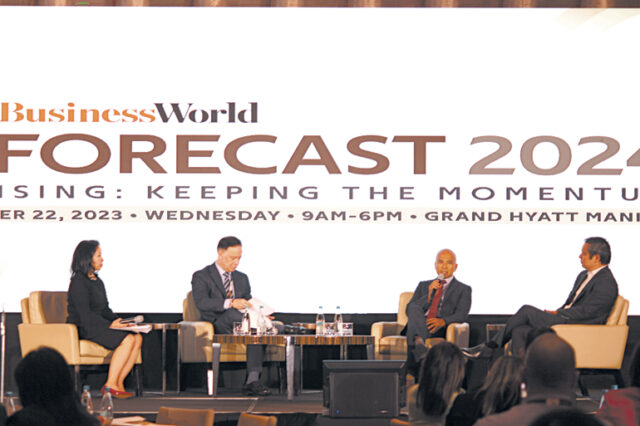
By Angela Kiara S. Brillantes, Special Features and Content Writer
2023 has been a progressive year for the Philippine real estate sector, as it started the year on a positive note and has worked its way in sustaining its performance.
As Colliers Philippines Research Director Joey Roi Bondoc previously wrote in a BusinessWorld column, in spite of the challenges in reaching the growth target of more than 6% this year, Philippine real estate is expected to have a “solid finish” towards the end-2023 as opportunities still remain for selected property segment. These include, among others, the expansion of resort or leisure-themed projects in the residential segment; holiday-induced spending in retail; and the potential of the Philippines as a meetings, incentives, conferences & exhibitions (MICE) hub for hotels.
Despite economic headwinds, key drivers such as the return to the office, increased tourism, investment pledges, and steady demand from office and retail spaces, are seen to help in mitigating imminent risks, thus bringing hope for the country’s real estate sector moving forward.
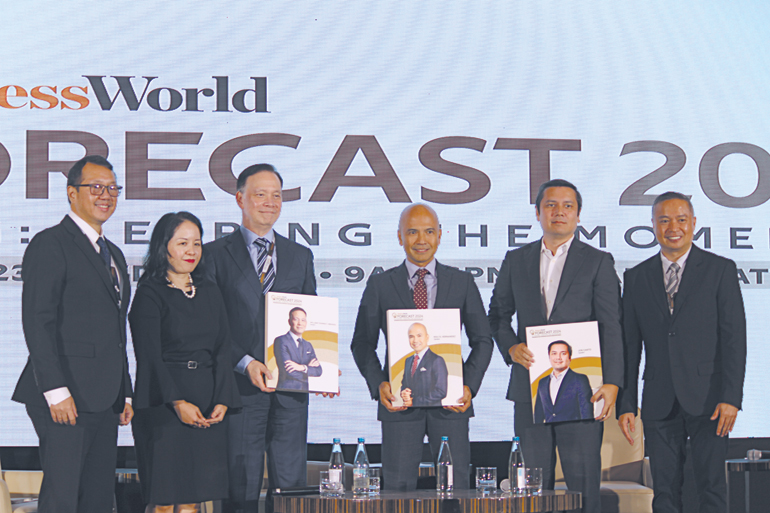
These were discussed in the first panel discussion of BusinessWorld’s Forecast 2024 last Nov. 22 in Grand Hyatt Manila in Bonifacio Global City, Taguig. McKinsey & Company Philippines Managing Partner Jon Canto, Federal Land Inc. President William Thomas F. Mirasol, and Megaworld Corp. Executive Vice-President for Sales and Marketing Noli D. Hernandez shared their outlook for the Philippine real estate market in the upcoming year, including the opportunities and challenges they expect the sector to face.
“The Philippines is optimistic about real estate. It is one of the sectors that will rebound fully next year. It has been resilient in the wake of COVID-19, inflation, and rising construction costs, but sustained demand and investment will take it through next year,” Mr. Canto of McKinsey & Company said during this presentation.
For Mr. Hernandez of Megaworld Corp., while there are risks in inflation, the Philippine real estate sector has been performing exceptionally well. Offices, businesses, and hotels have been increasing significantly, resulting in steady and increasing rental income, occupancy, and room rates.
“For our hotels, office, and businesses, we have also seen a surge of investor confidence and in fact, as far as retention levels of our tenants are concerned, it’s been very steady and increasing. This has contributed substantially to making sure we have a very stable rental income,” Mr. Hernandez said.
“Similarly, for our hotels and resorts business, we are seeing a very huge demand coming from the MICE industry, as well as from foreign tourist arrivals, both foreign and domestic. As a result, we have been seeing not just an increase in occupancy rates but also increase in room rates, especially compared to the previous year,” he added.
Likewise, Mr. Mirasol emphasized how the sector has continuously been creating developments for every Filipino to benefit from. In particular, he spotted residential homes in middle and high-end markets as main drivers of growth for Federal Land.
“We’re doing great. 2019 was our best year ever, and as of end-October, we’ve already exceeded 2019 numbers. We’re very optimistic about the year-end numbers,” Mr. Mirasol said.
“We’re optimistic that this positive side of momentum can carry on to the next year. We see signs of increased consumer confidence and have observed favorable opportunities from the high income and luxury market segments where most of our projects are,” he added.
Returning to office
Among the rising trends highlighted during the discussion was the rise of office spaces. While hybrid work arrangements have changed how people work and live, physical office spaces are found to be more needed among workforces.
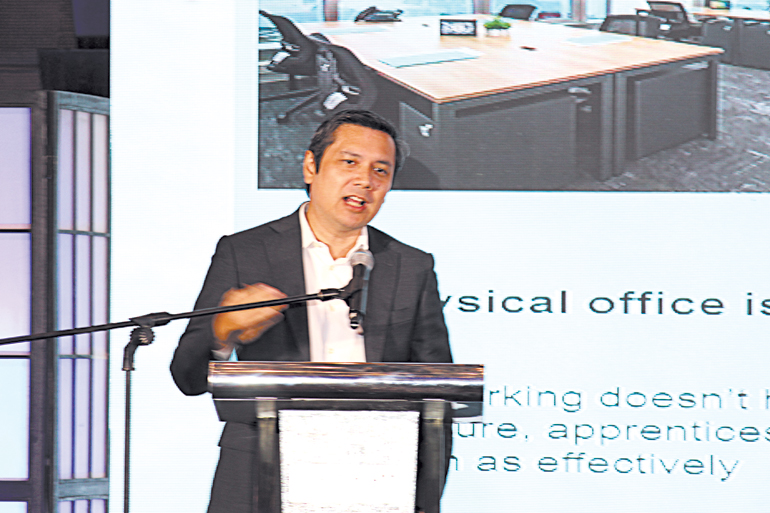
According to Mr. Canto of McKinsey, citing their firm’s recent report, people are spending more time in the office, and this is seen to impact real estate in general.
“Globally, we see that people are in the office three and a half days a week. That affects real estate, how we think about offices, and going back to work,” Mr. Canto said.
“Traditional views of the office are now different. Going back to the office, people now want a different kind of space, a place to collaborate, a place where they feel at home,” he added.
Mr. Canto’s presentation cited Cisco’s Global Hybrid Work Study, which showed a significant proportion of respondents globally preferring the hybrid work model. In the Philippines, it was found the study found that 70% of employees surveyed prefer hybrid work, while 20% prefer working fully online and 11% prefer a fully remote mode.
The McKinsey partner also highlighted that, compared to previous years, office spaces are much more considered now as spaces for collaborations, interactions, increased productivity, and fostering social cohesion.
“For Asia, there’s a stronger preference to return to [working on site]; but it will be different. It’s more purposeful collaboration, where you come to work to do certain things that are much effective in person, to drive social cohesion. Think about ideation sessions [and] working with teams — a different type of engagement than it was in the past,” Mr. Canto said.
“Filipinos are much more social. We want to see each other and to interact face-to-face. We also don’t have, let’s say, the technology services sector like in other places in the US and Europe where collaboration online is much more effective. We will need to come back more than them,” he added.
Given these expectations, Mr. Canto notes the importance of enabling younger generations to adjust to the new and evolving office environment in spite of their apparent hesitancy to fully return to office.
“The reality is that in the Philippines over half of companies have returned. Over time, as we get to a steadier state, we would see that there is a key role of physical office space. It’s good to have a different type of office space than you’re used to in the past. People want different things now when they come to the office. They want to ‘want’ to be there in essence. With that, you’ll get millennials and the younger generations to adapt accordingly,” Mr. Canto said.
“In the data that Jon has mentioned, the 20% of people who wants to go back to the office, these are the owners and executives, and the managers who want their staff to be in office all the time. There’s going to be a push and pull, but undoubtedly things are going to leaning more towards going back to the office,” Federal Land’s Mr. Mirasol added.
Moreover, the data also showed that the number of occupancy rates are going down, but it’s still exceeded to go up in the following year.
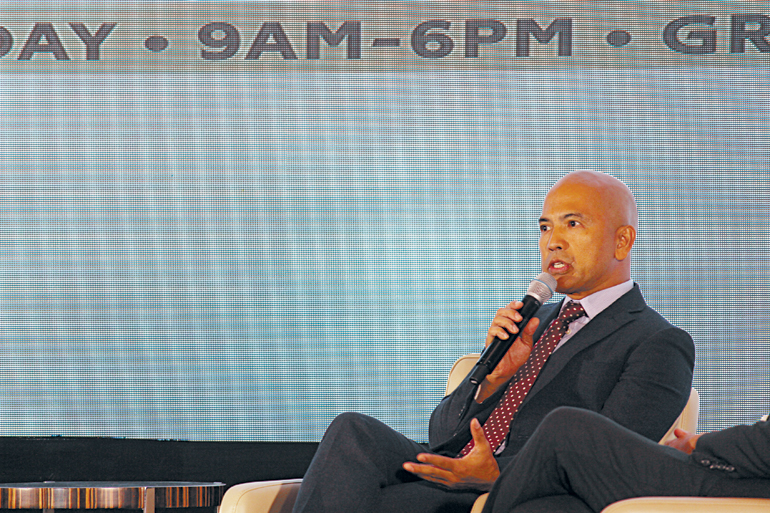
“Despite the COVID-19 [having] induced the work-from-home arrangements a couple of years back, people would always want to see each other,” Megaworld’s Mr. Hernandez shared.
There’s nothing that can replace the human interaction that makes people a lot more productive and we have been seeing a steady increase of occupancy rates. Our tenant retention levels are at an all-time high and this allowed the necessary rent escalation. So, I’m optimistic that moving forward this is a pattern that we can sustain.”
Risks in inflation, rising costs
Alongside such opportunities, the panel also cited risks that can hinder the sector’s growth. The risks are led by global inflation, driving the rising costs of materials and mortgage rates, which altogether are seen to make access to emerging markets more challenging.
For Mr. Canto, to address such issues, the country still has room for growth, starting with the lack of retail lending, where banks can play an important role.
Regarding mortgage rates, Mr. Mirasol observed that when interest rates are low, investors do not make as much money in investing; which means there is less demand for currency and the exchange rate also decreases.
“Not every consumer has the ability to pay cash. So, the more the flexible the banks are, the easier the mortgage rates will be, the better the industry will go,” he said.
“Higher interest rates tend to naturally bring down the man. But, on the upside, the economy is growing, and the consumer [can have] confidence in the future,” he added.

In spite of the seen risks, the impact of inflation is also seen as an opportunity that will help the sector to survive and thrive.
“While inflation poses a threat, it can also serve as a boon to the industry because we know that real estate investment still remains to be a very good hedge against inflation,” Mr. Hernandez explained. “On one hand, there is the threat posed by inflation as a deterrent to the impulse to invest. On the other hand, it can be an impulse that will generate more interest in the industry.”
Adding to inflation is the rising cost of materials, which has a direct impact on construction and development. Rising costs of materials, from low-income housing to luxury market segments, eventually lead to extra costs and higher prices for consumers who are buying or investing in real estate properties.
“Fortunately, as a big developer in scale, we can offer very inventive and creative payment schemes,” Mr. Hernandez responded. “And as you spread amortization over a period of time, it becomes more attractive and helpful for consumers who would like to aspire to be a part of the improving environment for community building. That is some way we can mitigate interest rate regime.”
Embracing sustainability
Also emphasized during the discussion was the shift to sustainability among property developers. For instance, since the pandemic, there has been an increase in replacing older buildings with sustainable and energy-efficient ones, as well as mixed-use developments that are transit-oriented and environment-friendly.
Yet, support from the public sector is necessary to supplement efforts in decarbonizing buildings and integrating sustainable practices in property development.
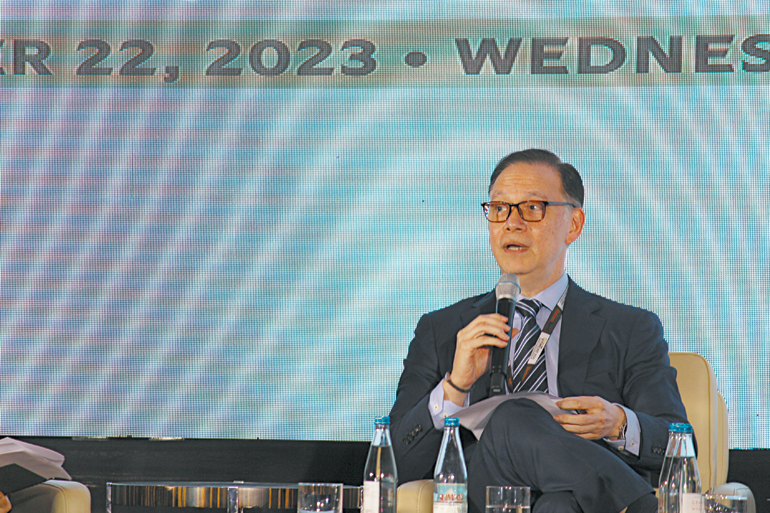
“[On sustainability,] the major issue is the cost. When a consumer finds out the costs, sometimes [they] get a little pushed back. Now, what can be done is [giving] incentives to the industry for doing more green development,” Mr. Mirasol said. “Leaning towards green is inevitable; we just have to find a way to make it more less expensive.”
Besides incentives, Mr. Canto added, the government can give their support in terms of policies covering the landscape of building infrastructure, communities, and affordable housing.
“These things will make the overall landscape in sustainability more acceptable to a large part of the population,” Mr. Canto said.



